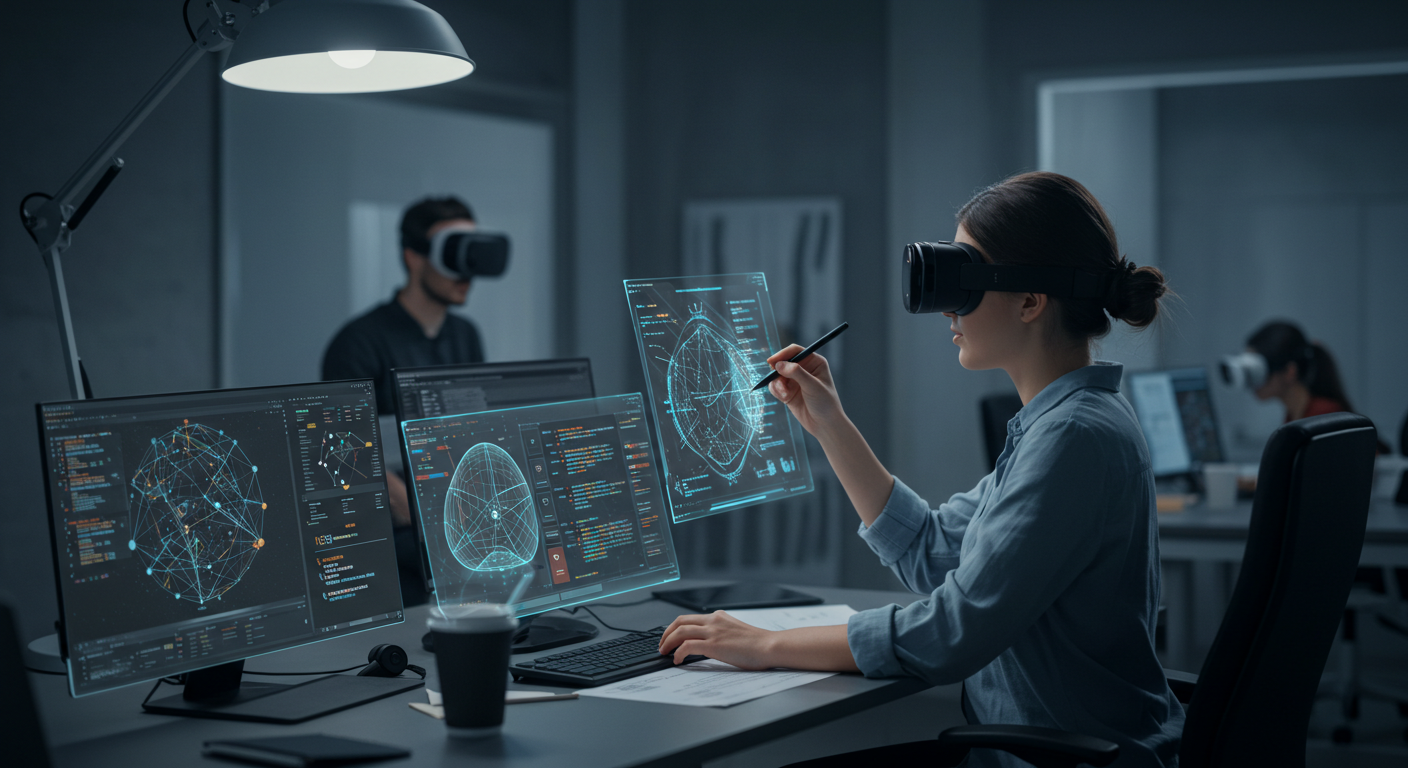How AR/VR Development Is Transforming Healthcare Training

The healthcare industry is constantly evolving, and with it, the demand for modern training solutions is increasing. Traditional training methods—classroom lectures, textbooks, and limited practice sessions—are not always effective in preparing healthcare professionals for real-world challenges. This is where AR/VR development for healthcare training comes in. By using immersive technology, hospitals, universities, and training centers can provide safe, cost-effective, and highly engaging learning environments.
At Techling, we specialize in delivering AR/VR development services that help medical institutions and enterprises build powerful training applications. These solutions improve learning outcomes, reduce training costs, and allow trainees to gain hands-on experience without risks to patients.
Why Healthcare Needs AR/VR Training
Healthcare is one of the most critical industries, where mistakes can have serious consequences. Traditional training often faces limitations:
-
Lack of real-world practice opportunities
-
Expensive medical equipment for training
-
Limited access to live cases
-
Difficulty in simulating rare or emergency scenarios
With AR/VR technology, these challenges can be minimized. Trainees can practice in a virtual environment that simulates real cases, medical procedures, and emergency situations without any risk.
Key Benefits of AR/VR Development in Healthcare Training
1. Safe Learning Environment
Trainees can practice surgeries, diagnostic procedures, or emergency responses in a simulated environment. Errors do not have consequences, making it a risk-free way to build confidence and skills.
2. Cost-Effective Training
Medical equipment and lab resources are expensive. AR/VR reduces the need for physical resources by providing virtual access to instruments, procedures, and anatomy models.
3. Accessibility for Learners
With AR/VR applications, training is no longer limited by location. Medical students and professionals can access simulations from anywhere, which makes global training programs possible.
4. Realistic Simulations
Immersive applications allow learners to interact with 3D models of human anatomy, practice surgical techniques, and even simulate patient behavior. This bridges the gap between theory and practice.
5. Scalability for Institutions
Hospitals and universities can train multiple learners at the same time through virtual platforms, reducing dependency on limited faculty or resources.
Use Cases of AR/VR in Healthcare Training
Surgical Training
Trainees can perform complex procedures virtually before attempting them on real patients. Mistakes become learning opportunities rather than risks.
Anatomy Learning
Medical students can explore 3D anatomy models in detail. AR-based applications make it possible to visualize organs, tissues, and body systems interactively.
Emergency Response Training
Virtual simulations prepare doctors, nurses, and paramedics for high-pressure situations like cardiac arrest, accidents, or mass emergencies.
Patient Interaction Skills
Trainees can practice communication, empathy, and patient counseling in virtual environments, preparing them for real-world patient care.
Techling’s Approach to AR/VR Healthcare Training Solutions
At Techling, we focus on building practical and scalable solutions for the healthcare sector. Our AR/VR development services are designed to meet the unique needs of medical institutions:
-
Custom Development: Tailored applications for specific medical procedures or training modules.
-
Cross-Platform Compatibility: Solutions that work on multiple devices—VR headsets, mobile, and desktop.
-
Realistic 3D Modeling: High-quality graphics and animations for accurate anatomy and procedure simulations.
-
Interactive Features: Quizzes, performance tracking, and step-by-step guidance to measure learner progress.
-
Secure & Compliant Solutions: Following healthcare compliance standards to ensure data security and reliability.
By combining advanced technology with healthcare expertise, Techling ensures that training programs become more effective, engaging, and impactful.
Challenges and Considerations in AR/VR Healthcare Training
While AR/VR offers huge advantages, institutions need to consider a few points:
-
Hardware Requirements: VR headsets and compatible devices are essential.
-
Content Development: High-quality simulations require accurate data and expert input.
-
Initial Costs: Development investment may seem high, but long-term savings are significant.
-
User Adaptation: Training staff and students to use AR/VR tools is necessary for success.
At Techling, we help clients address these challenges by providing end-to-end support—from consultation to deployment and ongoing updates.
Future of Healthcare Training with AR/VR
The future of medical education will rely heavily on immersive technology. As hardware becomes more affordable and accessible, AR/VR will no longer be optional but a standard part of healthcare training. From remote learning to advanced surgical practice, the possibilities are endless.
Techling continues to invest in research and development to deliver innovative AR/VR solutions that help healthcare organizations stay ahead in training and patient care.
Conclusion
AR VR development for healthcare training is reshaping the way medical professionals learn and practice. It ensures safe, cost-effective, and engaging learning environments that prepare healthcare workers for real-world challenges.
With expertise in AR/VR development services, Techling helps hospitals, universities, and training centers adopt immersive solutions that improve learning outcomes and enhance medical education.
The future of healthcare training is immersive, and Techling is here to build it.




